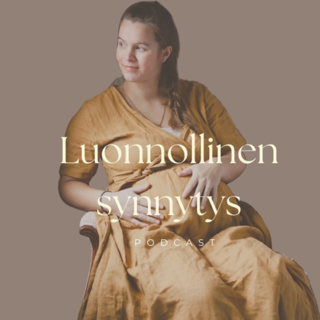
65: How to say "the" in Italian: before vowels
L', le, gli... there are many different ways to say "the" in Italian! Learn how to say it before vowels in this episode Learn about our Online Italian School and get a free mini lesson every week: https://joyoflanguages.online/italian-school Subscribe to our new Youtube channel: https://www.youtube.com/@joyoflanguages.italian?sub_confirmation=1 Get the bonus materials for this episode: https://italian.joyoflanguages.com/podcast/how-to-say-the-in-italian-before-vowels How to pronounce "gli": http://joyoflanguages.com/pronounce-gli-italian/ Today's Italian words Gli italiani cucinano molto bene = Italians cook really well. Qual'è il vostro segreto? = What's your secret? Gli = the italiani = Italians cucinano = they cook molto bene = very well Qual è = which is il vostro segreto = your secret Gli ingredienti sono la chiave = Ingredients are the key. Gli = the ingredienti = ingredients sono = are la chiave = the key Con ingredienti freschi, tutto è buono = With fresh ingredients, everything is tasty. Con = with ingredienti = ingredients freschi = fresh tutto = everything è = is buono = good or tasty In Italia abbiamo molto sole = In Italy, we have lots of sun In Italia = in Italy, abbiamo = we have molto sole = lots of sun Quindi è facile trovare prodotti buoni come le olive, le arance ecc. = So it's easy to find good produce like olives, oranges, etc. quindi = so è facile = it's easy trovare = to find prodotti = produce buoni = good come = like le olive = the olives le arance = the oranges ecc = etc Poi, la presentazione è molto importante = Then, presentation is very important. Poi = then La presentazione = the presentation è = is molto importante = very important Mangi prima con gli occhi = You eat first with the eyes. Mangi = you eat Prima = first Con = with Gli = the Occhi = eyes Poi con lo stomaco = Then with the stomach poi = then con = with lo stomaco = the stomach L'oliva = the olive L'arancia = the orange L'olio = the oil Le olive = the olives Le arance = the oranges Gli italiani = the Italians Gli ingredienti = the ingredients Gli americani = the Americans
19 Touko 20199min

64: How to say "the" in Italian: The basics
Learn how to say "the" in Italian? Let's start by reviewing the basics: il, la, i and le. Learn about our Online Italian School and get a free mini lesson every week: https://joyoflanguages.online/italian-school Subscribe to our new Youtube channel: https://www.youtube.com/@joyoflanguages.italian?sub_confirmation=1 Get the bonus materials for today's lesson: https://italian.joyoflanguages.com/podcast/how-to-say-the-in-italian-il-la-i-le Watch the video for today's lesson in our Facebook group: https://www.facebook.com/groups/5.minute.italian/permalink/2288483834543123/ Today's words il formaggio = (the) cheese Mi piace il formaggio = I like (the) cheese il prosciutto crudo = (the) Parma ham (a cured meat) prosciutto = ham crudo = raw i pomodorini = (the) cherry tomatoes il pomodorino = the cherry tomato il grissino = the breadstick i grissini = (the) breadsticks La pancetta = (the) bacon La mortadella = a type of Italian cold cut from Bologna. La carota = (the) carrot. Le carote = (the) carrots. La mela = (the) apple. Le mele = (the) apples.
21 Huhti 20198min

63: How to say "time" in Italian (Tempo vs. Volta)
Tempo and volta - they both mean "time" in Italian. But be careful, they're not interchangeable - learn when to use them! Learn about our Online Italian School and get a free mini lesson every week: https://joyoflanguages.online/italian-school Subscribe to our new Youtube channel: https://www.youtube.com/@joyoflanguages.italian?sub_confirmation=1 Get the bonus materials for this episode: https://italian.joyoflanguages.com/podcast/volta-tempo-time-italian Practise chatting in Italian with us: www.facebook.com/groups/5.minute.italian/ Today's Italian words il tempo vola = time flies il tempo = time (literally: the time) vola = flies Non ho tempo = I don't have time Non ho = I don't have (literally: not, I have) tempo = time Tutto il tempo Tutto = all il = the tempo = time Tempo è denaro = time is money il tempo = time ("the" time) è = is denaro = money il tempo è un'illusione = time is an illusion il tempo = time (literally "the time") è = is un'illusione = an illusion. Una volta = one time/once Una = one Volta = time Due volte = two times/twice Due = two Volte = times La prossima volta = next time La prossima = next (literally "the next") Volta = time La scorsa volta = last time La scorsa = the last Volta = time Ogni volta = every time Ogni = every Volta = time Molte volte = many times Molte = Many Volte = times
24 Maalis 20196min

62: Give it to me! Double Object Pronouns in Italian
Give it to me. I'll buy it for you. To say these sentences in Italian, you'll need a "double object pronoun". Learn what they are and how to use them. Learn about our Online Italian School and get a free mini lesson every week: https://joyoflanguages.online/italian-school Subscribe to our new Youtube channel: https://www.youtube.com/@joyoflanguages.italian?sub_confirmation=1 Get the bonus materials for this episode: https://italian.joyoflanguages.com/podcast/double-object-pronouns-italian Practise chatting in Italian with us: https://www.facebook.com/groups/5.minute.italian/ Today's Italian words Quel libro, me lo compri? = That book, can you buy it for me? (literally: that book, for me, it, you buy?) Quel =that Libro = book Me = for me Lo = it Compri = you buy Compro = I buy Lo compro = I buy it. Literally: it, I buy (For masculine things, like "il libro") La compro = I buy it. (la = for feminine things, like "la torta") Ti compro un libro = I buy a book for you (literally: for you, a buy a book) Te lo compro = I buy it for you (literally: for you, it, I buy) Me lo compri = You buy it for me (literally: for me, it, you buy) Me la compri = You buy it for me (la = for feminine things, like "la torta") Me lo dai = You give it to me (literally: to me, it, you give) Me la dai = You give it to me (la = for feminine things, like "la torta") Te lo compro = I buy it for you (literally: for you, it, I buy) Te la compro = I buy it for you (la = for feminine things, like "la torta") Te lo do = I give it to you (literally: to you, it, I give) Te la do = I give it to you (la = for feminine things, like "la torta") Glielo compro = I buy it for him/her/them/you formal (literally, for him/her/them/you formal, it, I buy) Gliela compro = I buy it for him/her/them/you formal (la = for feminine things, like "la torta") Glielo do = I give it to him/her/them/you formal (literally, to him/her/them/you formal, it, I give) Gliela do = I give it to him/her/them/you formal (la = for feminine things, like "la torta") Ce lo compro = I buy it for us (literally, for us, it, I buy) Ce la compro = I buy it for us (for feminine things, like "la torta") Ve lo compro = I buy it for you all/both (literally: for you all/both, it, I buy) Ve la compro = I buy it for you all/both (la = for feminine things, like "la torta") Ve lo do = I give it to you all/both (literally: to you all/both, it, I give) Ve la do = I give it to you all/both (la = for feminine things, like "la torta")
10 Maalis 201916min

61: Indirect Object Pronouns in Italian - The Ultimate Guide
Gli, le, mi, ti... Those little words are everywhere in Italian! This lesson will help you understand what they mean and when to use them in conversation. Learn about our Online Italian School and get a free mini lesson every week: https://joyoflanguages.online/italian-school Subscribe to our new Youtube channel: https://www.youtube.com/@joyoflanguages.italian?sub_confirmation=1 Get the bonus materials from today's episode: https://italian.joyoflanguages.com/podcast/indirect-object-pronouns-italian Practise chatting in Italian with us by joining our facebook group: www.facebook.com/groups/5.minute.italian/ Today's Italian words Mi = to me/for me Ti = to you/for you Gli = to him/for him Le = to her/for her Ci = to us/for us Vi = to you/for you (plural "you", when speaking to two or more people) Gli = to them/for them Do = I give Questo = this Ti = to you/for you Ti do questo = I give this to you Compro questo = I buy this Ti compro questo = I buy this for you Vi = To you/for you (plural - when speaking to two or more people) Vi do questo = I give this to you (plural) Vi compro questo = I buy this for you (plural) Gli = to him/for him Gli do questo = I give this to him Gli compro questo = I buy this for him Gli = to them/for them Gli do questo = I give this to them Gli compro questo = I buy this for them Le = to her/for her Le do questo = I give this to her Le compro questo = I buy this for her Mi = to me/for me Mi fai questo = you do this to me Perché mi fai questo?! = Why are you doing this to me? Perché = why Mi = to me Fai = you do Questo = this Ci = to us/for us Ci fai questo = you do this to us Perché ci fai questo? = Why are you doing this to us?
10 Helmi 20199min

60: How to Learn Italian - Tips from a Polyglot Italian teacher
An interview with Italian teacher and language expert Stefano - get tips on how to learn grammar, make consistent progress and stay motivated all year. Learn about our Online Italian School and get a free mini lesson every week: https://joyoflanguages.online/italian-school Subscribe to our new Youtube channel: https://www.youtube.com/@joyoflanguages.italian?sub_confirmation=1 Bonus materials for today's episode: https://italian.joyoflanguages.com/podcast/how-to-learn-italian Today's Italian words Buon 2019 a tutti! = Happy 2019 everyone Buon = good A = to Tutti = everyone Oggi parliamo di cosa ci vuole per imparare bene l’italiano = Today, we're talking about what's needed to learn Italian well. Oggi = today Parliamo = we speak Di = about Cosa = what Ci vuole = is needed Per = in order to Imparare = learn Bene = well l’italiano = Italian (literally "the Italian") In questo nuovo anno appena iniziato = In this new year (that's) just begun. In = in Questo = this Nuovo = new Anno = Year Appena = just Iniziato = started Innanzitutto, bisogna sapere ascoltare = First of all, it's necessary to know how to listen Innanzitutto = first of all Bisogna = it's needed/necessary Sapere = know how to Ascoltare = listen Per poi ripetere e imitare = in order to then repeat and imitate. Per = in order to Poi = then Ripetere = repeat e = and Imitare = imitate Inoltre, ci vuole pazienza = Furthermore, you need patience Inoltre = furthermore Ci vuole = it's needed Pazienza = patience Meglio progredire piano e bene, che non rapidamente ma male = It's better to progress slowly and well, rather than quickly but badly. Meglio = better Progredire = progress Piano = slowly e = and Bene = well Che non = rather than Rapidamente = quickly Ma = but Male = badly Infine = in the end Serve = it's needed Una forte = a strong Motivazione = motivation La nostra passione è il motore che può portarci lontano = our passion is the engine that can take us far La = the Nostra = our Passione = passion è = is Il motore = the engine Che = that Può = can Portare = take Ci = us Lontano = far
13 Tammi 201931min

59: Ask to her! Listen me! (When Italian and English are different)
Listen me! Sounds funny in English, doesn't it? But that’s how they say it in Italian. Learn more Italian expressions like this and how to use them. Learn about our Online Italian School and get a free mini lesson every week: https://joyoflanguages.online/italian-school Subscribe to our new Youtube channel: https://www.youtube.com/@joyoflanguages.italian?sub_confirmation=1 Get the bonus materials from today's episode:https://italian.joyoflanguages.com/podcast/ask-listen-italian-different Practise chatting in Italian with us by joining our facebook group: https://www.facebook.com/groups/5.minute.italian/ Today’s Italian words Tua mamma impara l’italiano, vero? = Your mum is learning Italian, right? Tua mamma = your mum Impara = learns L’italiano = the italian Vero = true Le dai una mano? = Do you give her a hand? Le = to her Dai = You give Una mano = a hand. Si, a volte = Yes sometimes. Che cosa fai? = What do you do? Le chiedo: “che cosa fai oggi” = I ask her “what are you doing today” E scambiamo un paio di parole in italiano = And we exchange a few words in Italian. Le = to her Chiedo = I ask Che cosa = what Fai = you do Oggi = today E = and Scambiamo = we exchange Un paio = a pair Di = of Parole = words In italiano = in Italian. Le chiedo = I ask her (literally = to her, I ask) Gli chiedo = I ask him (literally = to him, I ask) Poi, le insegno un po’ di grammatica = Then, I teach her a little grammar. Le = to her Insegno = I teach Un po’ = a bit Di = of Grammatica = grammar Le insegno = I teach her (literally = to her, I teach) Gli insegno = I teach him (literally = to him, I teach) Come studia l’italiano? How does she study Italian? Di solito ascolta un CD e 5 minute Italian ovviamente! = Usually she listens to a CD and 5 minute Italian obviously! Di solito = usually Ascolta = she listens Un CD = a CD
16 Joulu 20188min

58: How to use "le" in Italian (to her, for her)
Learn how to use the Italian pronoun "le", which means "to her" or "for her". Learn about our Online Italian School and get a free mini lesson every week: https://joyoflanguages.online/italian-school Subscribe to our new Youtube channel: https://www.youtube.com/@joyoflanguages.italian?sub_confirmation=1 Get the bonus materials from today's lesson: https://italian.joyoflanguages.com/podcast/italian-object-pronoun-le Practise chatting with us in Italian by joining our Facebook group: https://www.facebook.com/groups/5.minute.italian/ Today's Italian words and phrases Che cosa fai quando finisci il latte di soia di tua sorella? = What do you do when you finish your sister’s soy milk? Che cosa = what Fai = you do Quando = when Finisci = you finish Il latte = the milk Di soia = of soia Di tua sorella = of your sister? Le compro un’altra bottiglia = I buy another bottle for her. Le = for her Compro = I buy Un’altra = another Bottiglia = bottle Quando lascia le cose in giro? = When she leaves things hanging around?Quando = when Lascia = she leaves Le cose = the things In giro = around Le dico di mettere in ordine! = I tell her to tidy up! Le = to her Dico = I say di = to (literally of) Mettere = put In = in Ordine = order Le dico = I tell her/say to her Gli dico = I tell him/say to him Quando è raffreddata? = when she has a cold? Le faccio un tè con miele = I make a tea with honey for her. Le = for her Faccio = I make Un tè = a tea Con miele = with honey. Le do il mio passaporto = I give you my passport (formal) Le do = I give her OR I give you (formal) Le offro un caffè = I offer you a coffee (formal) Le offro = I offer her OR I offer you (formal)
2 Joulu 20188min





















